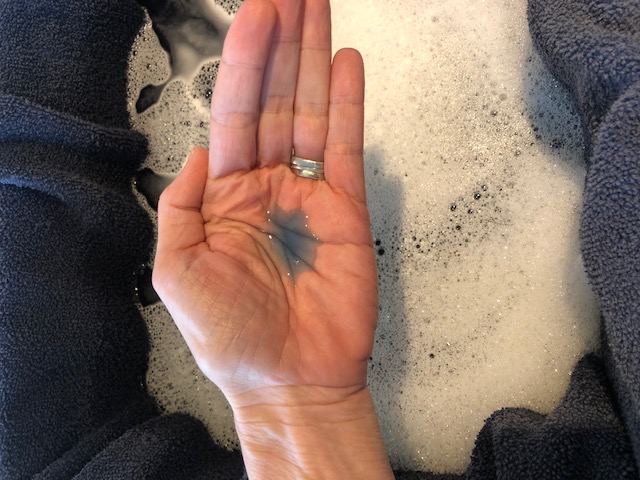Care and Handling:
Dust: Is house dust mostly dead skin?? This is one of those "Eww! Gross!" facts that sound very scientific, but isn't really true. Sometimes a specific percentage of dust is said to be skin but unless you are a molting bird or reptile, very little of your environment is composed of dead body parts.
There are far more common sources of dust pollutants, including animal dander, sand, insect waste, flour (in the kitchen) and of course lots of good, old-fashioned dirt. Every time we open a door or window, we stir up and move around tiny, airborne particles that eventually settle around the house. Humans do shed dead skin, but most of it is carried away by water when we shave, wash our clothes or bathe, ending up not on our floors but in our sewers.
Damage: One of the most common causes of damage to our WDCC sculptures is rough or careless handling. Almost all such damage can be avoided by handling pieces as little as possible, thinking ahead and using common sense.
A good habit to get into is wearing soft gloves whenever handling your porcelain items. When you touch something, your fingers can leave behind a residue that dust and dirt will stick to.
Support the object evenly using both hands - think about it's weight and size. Avoid lifting the object by any parts that stick out, such as limbs or tails. These areas are the most fragile and are the parts that most often break.
Accidental breakage:
The main cause of damage is impact damage. Avoid displaying your sculptures in areas where there is passing traffic or where you need access behind them. For example on window sills in front of an opening window. If you are constantly accessing that window, eventually disaster will strike!
Display cabinets are the best option. Make sure your pieces are not crowded and aren't touching one another. Vibration can also be a problem. A busy road outside or excessive foot traffic on a bouncy floor can cause ceramics to 'creep' and they may bump into other pieces or fall from the shelf. Mounting waxes can be purchased to prevent movement. Take care to ensure the product doesn't stain and use it sparingly as it can be very difficult to remove.
If you are going to make an insurance claim, photograph the scene before anything is moved. Collect all of the fragments no matter how small. Fragments can travel quite a distance so look carefully to find all of the pieces.
Place larger pieces into a tray or box, padding or loosely wrapping them with clean tissues. Use small plastic bags for small pieces. Try not to touch the broken edges as fingermarks can make it difficult to bond the pieces. Resist the urge to try to fit any pieces back together - edges are always fragile.
In theory, bonding a broken sculpture should be straight-forward. However, the sheer number of poor quality repairs found - misaligned edges, adhesive that has stained porous ceramic bodies, or lumps of excess glue along the break line - highlight the problems that can be encountered.
Sometimes the damage caused by amateur repairs can be irriversible. If you value your sculpture, leave the bonding to someone with extensive restoration knowledge.
Cleaning your WDCC
1. First, remove any dust with a dry cloth or duster. Microfibre material is the best as the negative charge helps pull away dust from the surface instead of moving it around on the figurine.
2. Next use a small, soft-bristled brush (such as a make-up brush) to extract dust from the tiny holes and crevices on the sculpture.
What to do if you buy a sculpture with heavy amounts of grime and sludge?
When deep-cleaning porcelain, you must be careful of temperature changes. Never use water that is too hot and allow thin items to acclimatize to the water temperature to avoid damaging the delicate finish.
1. Fill a plastic bin with warm (not hot!) soapy water. Make sure that it is quite a bit larger than the sculpture you need to clean. Line it with old towels to avoid damage from accidental slips and falls. Use about a quarter-sized amount of mild dishwashing soap (such as Dawn, Joy, or Ivory) in your hand. If you must use a sink, line the bottom and sides with thicker towels as even the slightest bump against a hard surface may break the sculpture.
2. You can use a soft sponge to gentle rub away grime, grease or smoke sludge. Always work slowly and very gently. Remove stains with baking soda paste or a half and half salt and vinegar mixture. Never use a toothbrush or scourer pad to clean porcelain; use a soft cloth or sponge and scrub with a light hand.
3. When finished, you can rinse it under fresh warm water that is the same temperature.
4. Place some clean paper towels on the counter and set the sculptures on it to dry. Make sure it is completely dry before putting back in your display case.
Never use beach or chemical cleaners when washing your porcelain. Avoid abrasive harsh cleaning agents which can damage or dull the glaze itself. Be aware of any restorations. Repairs to your items are always more sensitve to cleaning than the original ceramic so keep a close eye on those spots.
For really stubborn stains, you can try to purchase a porcelain cleaner with added peroxide from the store. Use it with extreme caution and try the product on a small, not so visible area first.

